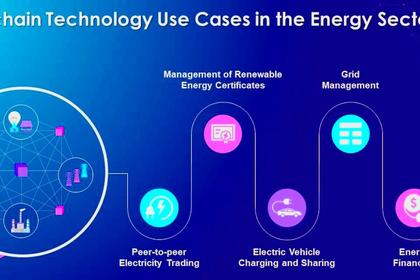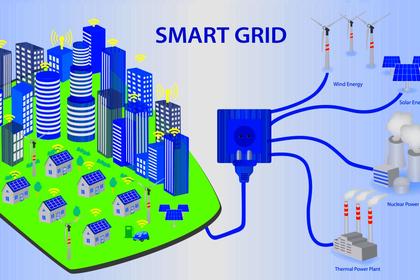
PRIVATE LTE NETWORKS FOR ENERGY

By MARCOS RIBEIRO BUSINESS DEVELOPMENT & PRODUCT MGT, Easymetering LLC
ENERGYCENTRAL - Sep 27, 2023 - In today's ever-changing landscape, particularly in technology, in highly regulated public services worldwide where tariffs are often set by external bodies, Return on Investment (ROI) in technology is not just a performance metric – it's a lifeline. The imperative to innovate must be delicately balanced against the very real risks of poor performance and regulatory disapproval. Utility companies are at the forefront of technological innovation. Therefore, two critical aspects deserve the utmost attention: gaining hands-on experience with private cell operations and conducting rigorous testing of network applications before they go into the field. This means that the most effective risk mitigation strategies and simulated laboratory testing of technologies are required prior to full-scale deployment. This strategic approach not only increases operational efficiency, but also ensures the reliability and resilience of the network infrastructure.
Private LTE Network Operations: Building the Bedrock and Symphony of Choices
Private LTE Networks are a game-changer for utilities. They offer dedicated, secure, and high-performance connectivity that can be tailored to specific needs. However, before utilities embark on large-scale deployments in the field, they must first gain experience through controlled laboratory environments, and being imperative of such preliminary testing, focusing particularly on the three LTE technologies—NB-IoT, CAT-M, and Broadband (CAT-1/CAT-4)—present a spectrum of capabilities tailored to various utility needs. Each comes with distinct implications for cost, operational efficiency, and, ultimately, ROI.
- NB-IoT: Highly efficient for long-range, low-power applications like remote monitoring.
- CAT-M: A balanced choice for medium-data-rate applications, with lower latency.
- Broadband (CAT-1/CAT-4): The high-performance option is suitable for data-intensive tasks like video surveillance.
By leveraging lab-simulated testing, utilities can make data-driven decisions on technology choices that align closely with ROI objectives and meet regulatory standards.
Simulated Private LTE Network Operations
Simulated private LTE network operations provide an invaluable opportunity to recreate real-world scenarios and challenges, minus the risks. This controlled environment enables utilities engineers and operators to fine-tune every aspect of their private LTE networks, ensuring they are well-prepared for the intricacies of the field.
- Network Configuration: Utilities can experiment with different configurations, ensuring optimal coverage, capacity, and quality of service. This iterative process helps to strike the right balance, ensuring their network can handle the demands of critical grid applications.
- IoT Device Behavior: With the proliferation of IoT devices, understanding how they interact with their network is crucial. In a simulated environment, Utilities can assess the behavior of various IoT devices, guaranteeing connectivity and reliable data transmission.
- Network Resilience: Stress tests in a controlled environment allow evaluating their network's resilience under various conditions, such as extreme weather events, network congestion, or interference. Identifying vulnerabilities in advance empowers them to proactively mitigate risks.
- Security Protocols: Ensuring the security of utilities critical infrastructure is non-negotiable. Simulated private LTE network operations allow to rigorously test and validate their security protocols, ensuring data remains confidential and network access is restricted to authorized personnel only.
- Firmware and Software Updates: Maintaining and updating their network is an ongoing task. Their laboratory environment lets to test firmware and software updates without affecting live operations.
Utility Grid Application Validation: Maximizing Efficiency and Reliability and ROI through Reliability
Electricity grid applications are the backbone of utilities operations and grid applications must work in concert with your choice of technology to maximize ROI and meet or exceed regulatory criteria. They streamline asset management, enhance grid performance, and enable demand response. However, their successful integration and operation require meticulous testing and validation, ideally in a laboratory setting.
- Performance Optimization: Their grid applications are designed to optimize operations, but their effectiveness depends on proper configuration and integration. Rigorous testing identifies and addresses performance bottlenecks, ensuring they operate at peak efficiency. Trial algorithms with different LTE technologies to ensure they can handle stress points, thereby avoiding regulatory penalties for outages.
- Interoperability: Utilities often use grid applications from different vendors. Ensuring interoperability is essential. Laboratory testing assesses integration points, data exchange, and compatibility with existing systems.
- Scalability: As Utilities grow, their requirements evolve. Simulated testing provides insights into how grid applications scale with increasing demands, helping to plan for long-term expansion.
- Reliability and Resilience: Their grid applications must operate reliably under all conditions. Controlled testing identifies potential failure points and strategies for maintaining service continuity.
- Data Security: Their applications handle sensitive data. Robust security measures are paramount. Testing helps to evaluate the effectiveness of their security protocols and encryption mechanisms.
- Demand Response and Efficiency: Demand response programs optimize energy consumption and grid stability. Testing in a laboratory allows to fine-tune strategies and measure their impact on energy efficiency. Validate CAT-M and NB-IoT in lab settings to ascertain their effectiveness in managing renewable energy resources, a growing focus for many regulators.
Preparing for a Future-Ready Grid, Regulatory and Financial Success
In summary, Lab-simulated testing of LTE technologies offers a robust mechanism for risk mitigation, enabling utilities to make informed decisions that positively influence ROI and align with regulatory requirements. With careful planning and simulation, utilities can transform technology from a risky investment into a strategic asset, primed to navigate both the challenges and opportunities presented by the modern utility landscape. Utilities must prioritize gaining experience with private LTE network operations and validating grid applications within controlled laboratory environments. This proactive approach minimizes risks, optimizes performance, and enhances the overall resilience of their grid. It ensures Utilities are well-prepared to navigate the challenges and opportunities presented by the modern energy landscape. By leveraging simulated experiences and rigorous validation, Utilities can build a robust foundation for a reliable, efficient, and future-ready grid.
-----
Earlier:


















